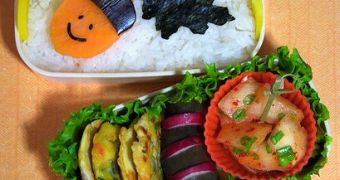Penn State researchers elaborated a new project, starting from the idea that quick school cafeteria lines could lead to healthier food choices.
They said that their experiment will involve middle schools, where there soon might be fast cafeteria lines, in an attempt to help students eat healthier.
This entire project is based on economic concepts and will study the effects that fast cafeteria lines have on healthy lunch choices of middle school students.
Amit Sharma, assistant professor at Penn State said that “students have only a little over 30 minutes to eat lunch, and that includes time spent in the lunch line.
“Our idea is to create a conducive environment where it is more convenient for students to make healthier food choices.”
Before starting the experiment, the researchers must first gather information from the students, parents, administrators and cafeteria personnel, about the way that students make food choices, and which dishes are the most popular.
Only then, they will have all the data necessary to develop food combinations for the fast service lane.
“We have to strike the right balance when we create the meal deals,” explained Sharma.
“The food choices should be exciting enough for the students, but also healthy.”
Once the food combinations are established and the fast service lane is in place, the researchers will gather data on fast lane use and food combination sales for a two to three weeks period.
After that, the sale of the meals will continue for another week, to make sure that the students keep making healthy food choices.
Sharma said convenience is the key, and “if we can counter those unhealthy choices, we can slowly have the students choose healthier foods rather than food that might be unhealthy.”
The reality is that when students don't have much time, and they have to choose between multiple dishes, they will usually pick food that is familiar to them, and “those choices, as you can imagine, usually aren't the most healthy ones.”
This fast service lane option for school cafeterias will limit the time spent in line, and also the choice between foods, and Sharma believes that method will determine students to take the fast lines more often.
This service will be tested at a local middle school, since middle school students are ideal candidates for this kind of experiment.
Previous research suggests they are beginning to develop the cognitive ability to make choices – like decisions on food and health, and they also face more options at this age.
Another aspect that should not be ignored in the school district's budget, because “obviously, for the program to work, it has to be affordable.
“If the fast lane meals incur significant costs for the food service, we will have to go back to the drawing board and find the solutions that are more financially viable,” added Sharma.
The US Department of Agriculture recently awarded $40,000 from the Economic Research Service to Amit Sharma, assistant professor, Martha Conklin, associate professor, hospitality management, and Lisa Bailey-Davis, senior instructor of public health sciences, College of Medicine.

 14 DAY TRIAL //
14 DAY TRIAL //